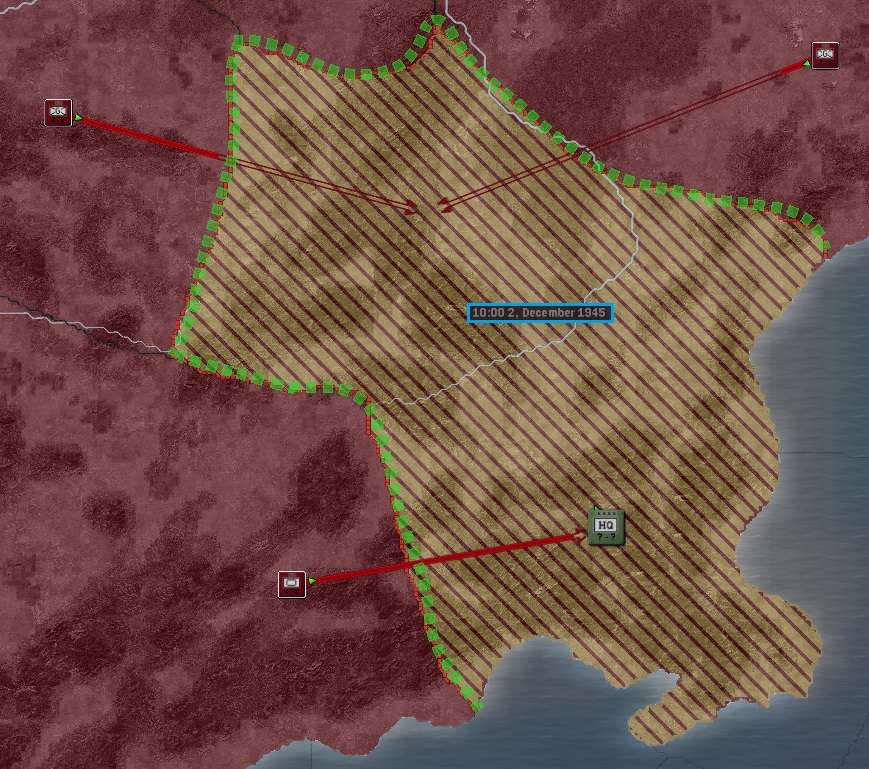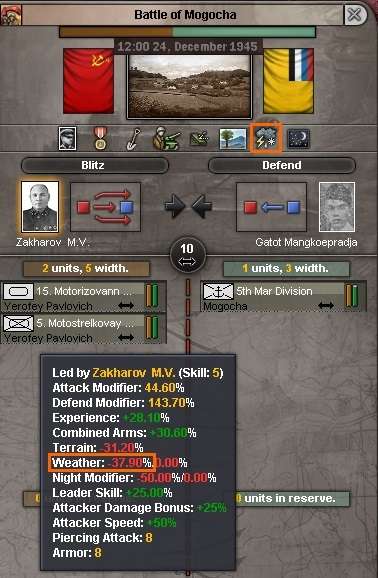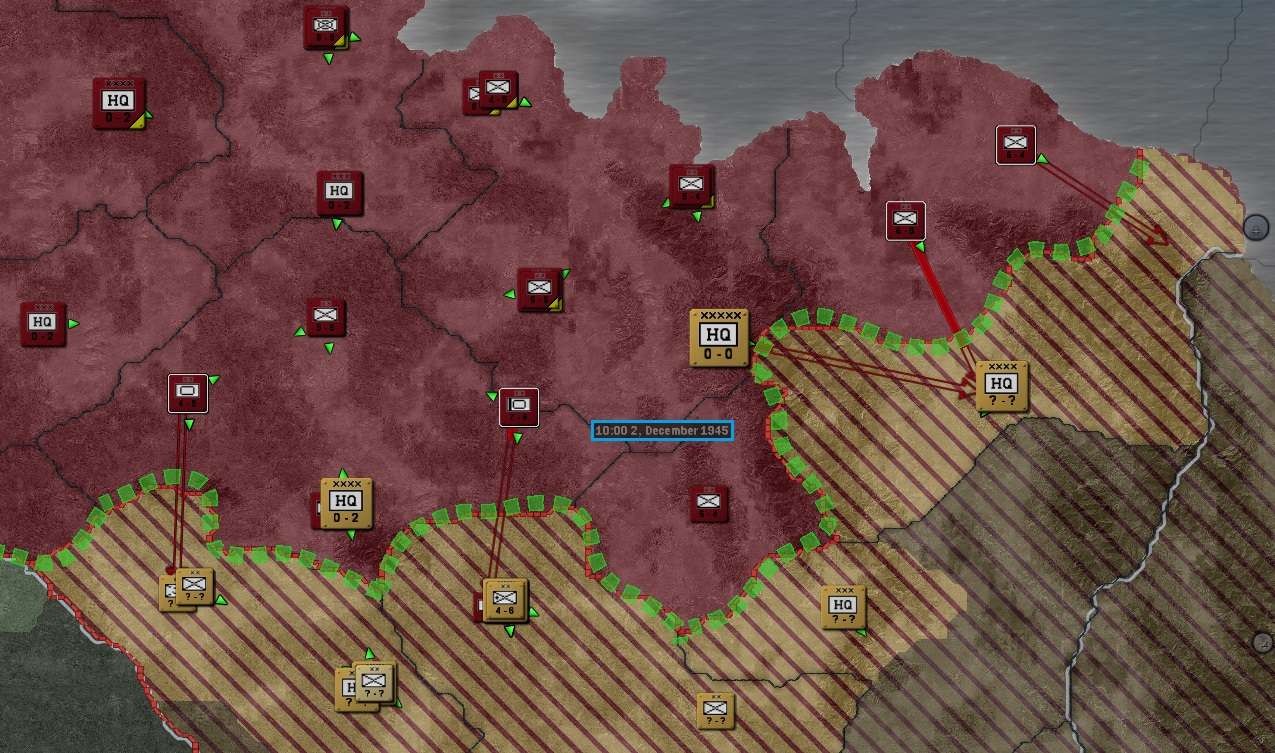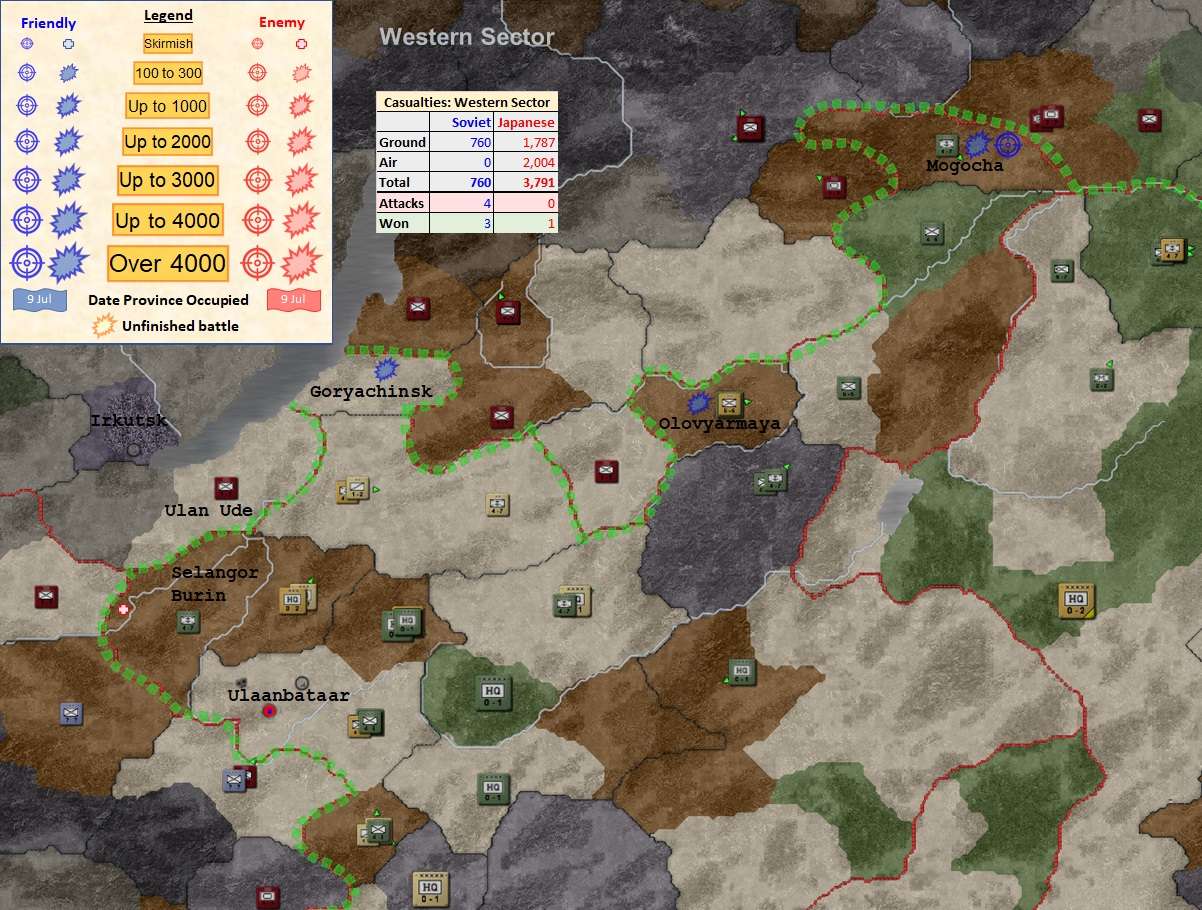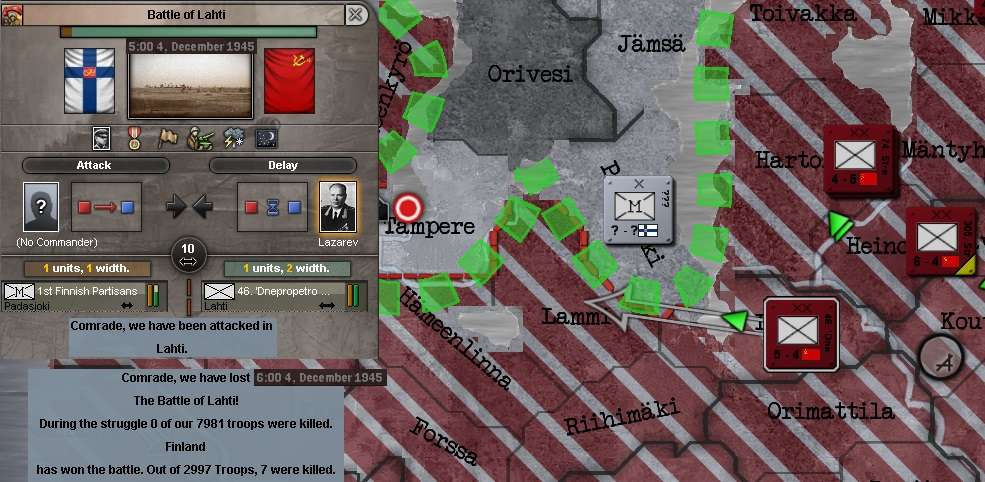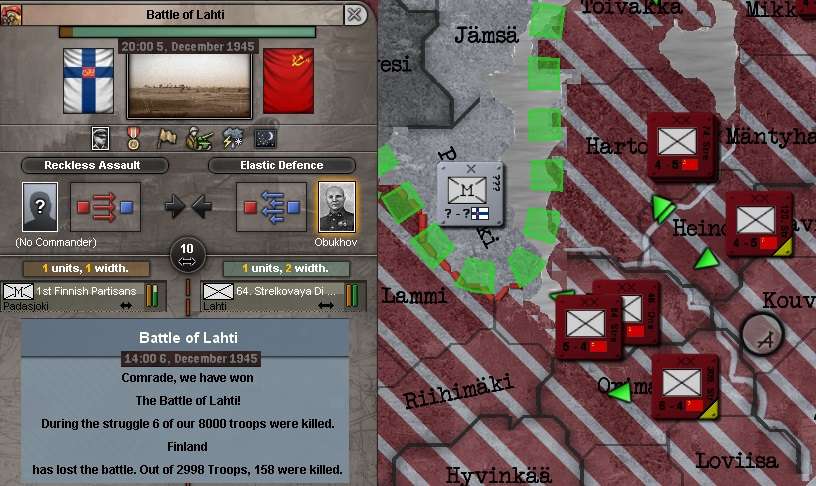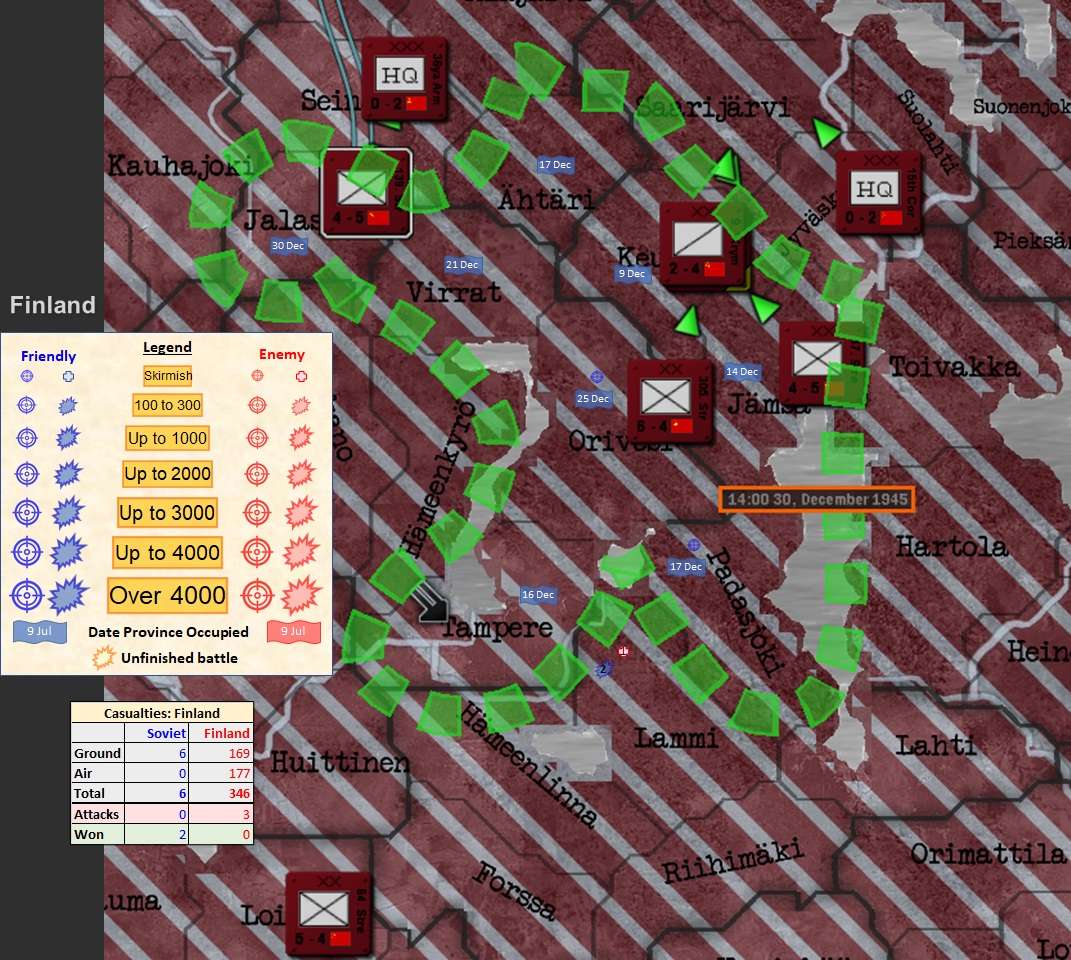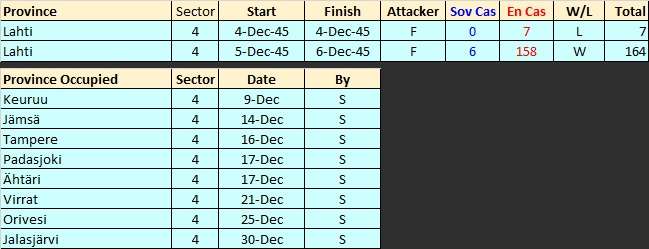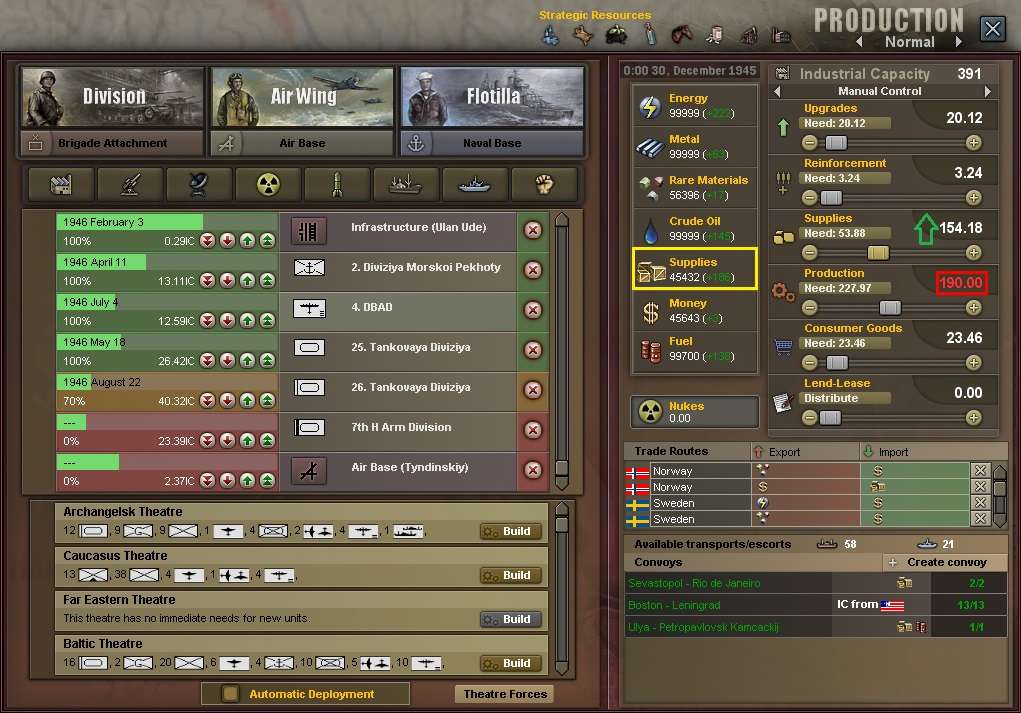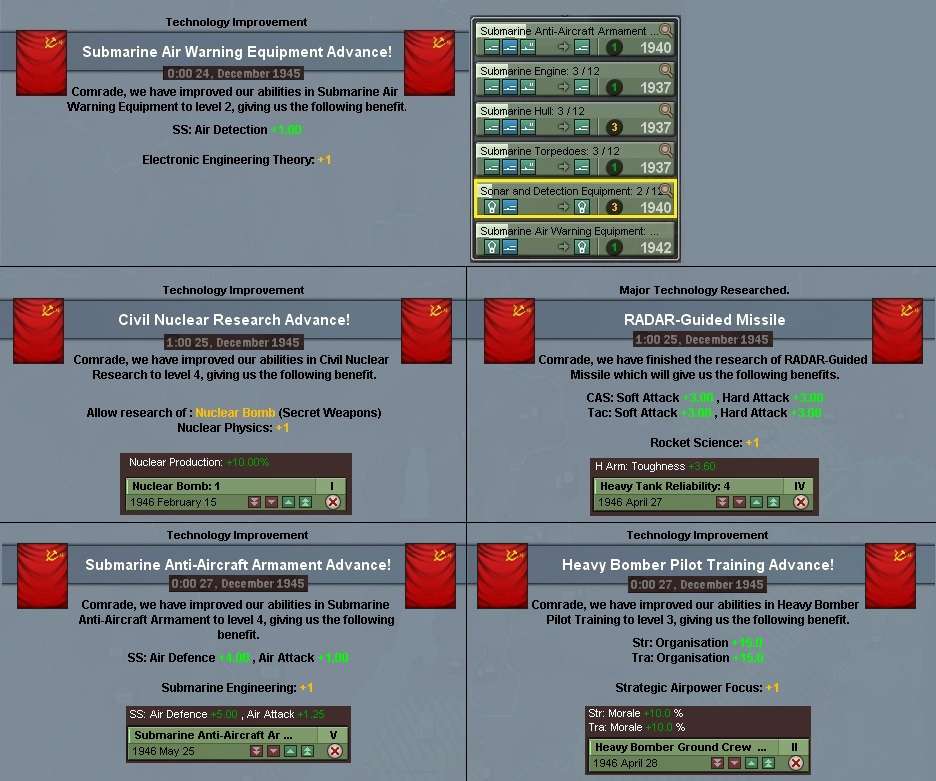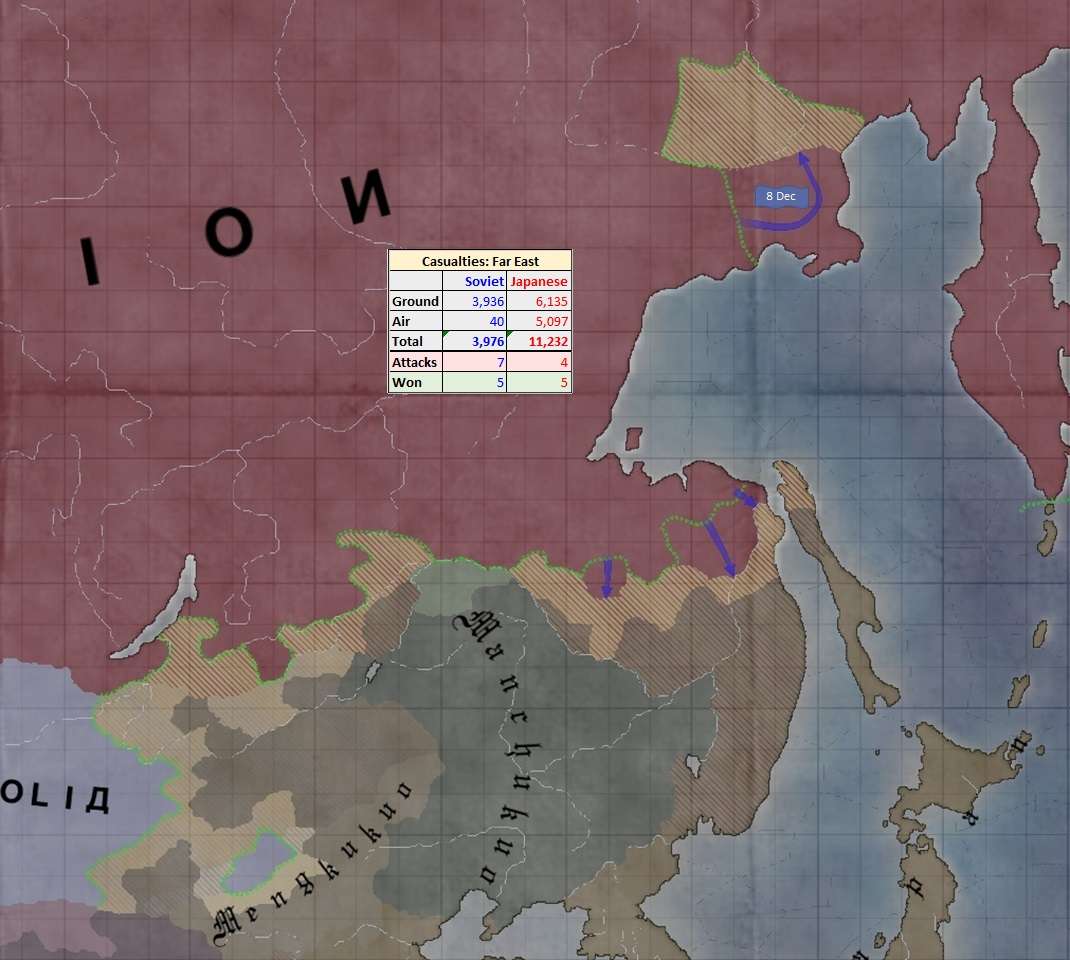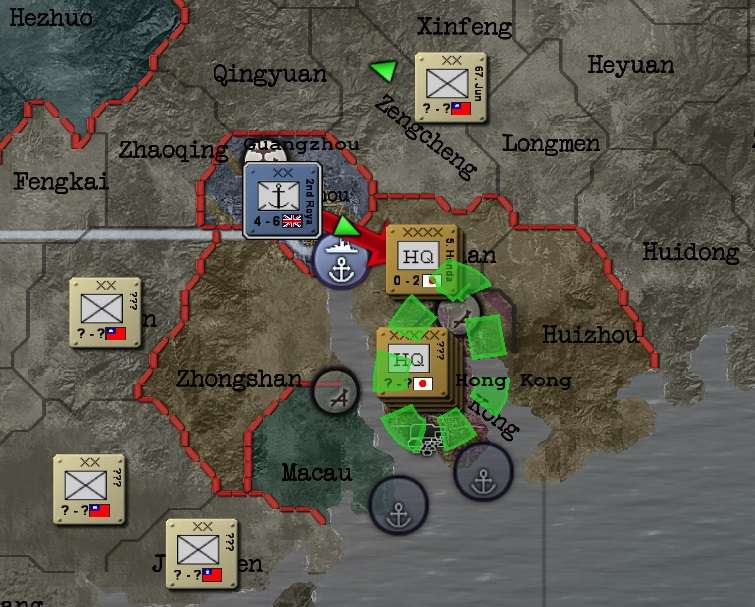Chapter 21 – November 1945
Chapter 21 – November 1945
AuthAAR’s Notes: So, as mentioned before my new HOI3 mod project is quite time-consuming, as I’m learning to mod the game from scratch and doing a major country and scenario rewrite, with dozens of new or modified countries, map changes, new/adapted events etc.
With this and my three other AARs still going, it means this one is going to get even quicker and dirtier (I’m gradually honing it down to my original ideal of short and sharp
I hope all this meets with your approval, Dear Readers. I think the sweep and gist of things still comes across OK, but please let me know if you think it doesn’t.
******
1. The Far East Front
[Note: The first format change is to provide an up-front summary of the whole Front, then just add few commentary details and stats for each sector.]
November saw supply problems across the front have a noticeable effect on Soviet combat operations. The Central Sector was particularly hard hit by shortages, with the air base of Irkutsk basically out of commission for the month, and those to the east of it on limited operations only. Poor supply also badly affected a number of ground battles. The two combined meant the Japanese were able to be far more aggressive in the Central Sector in particular, though the Soviets still made some gains.
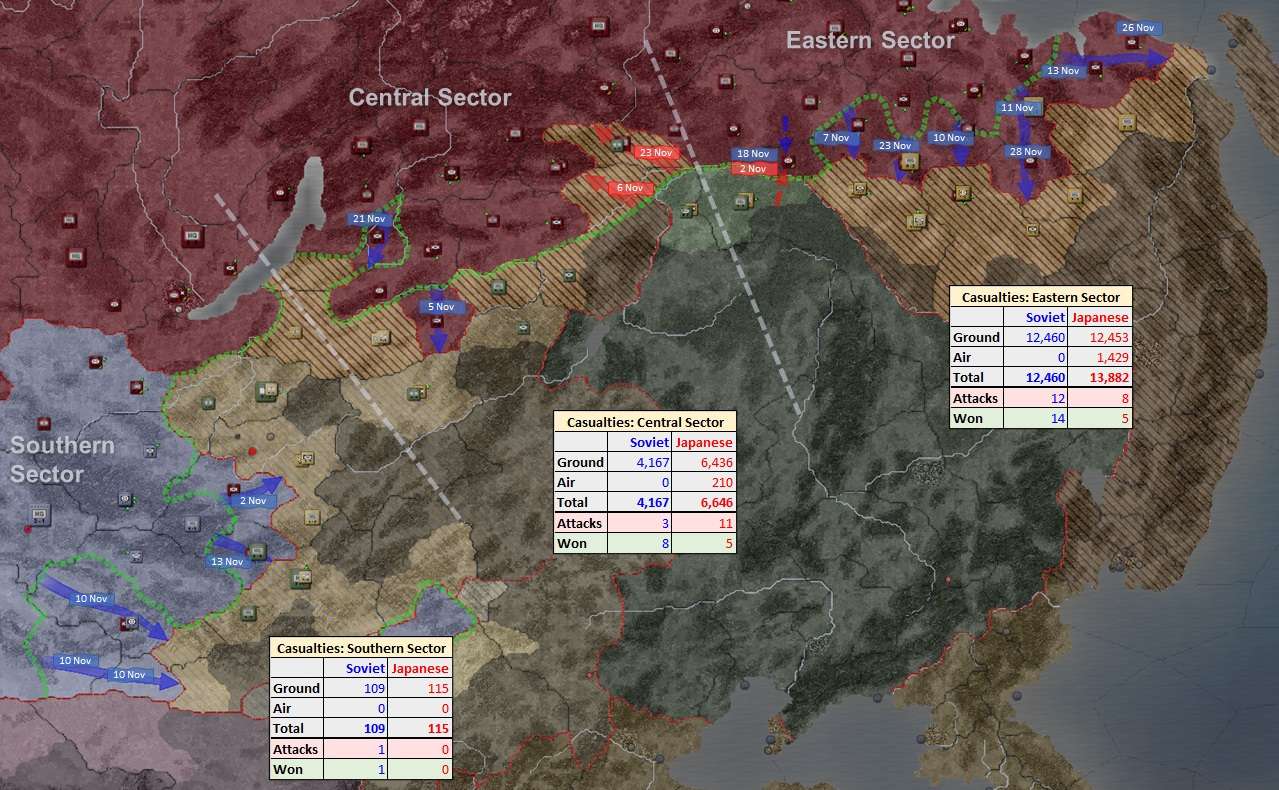
Operational Summary, Far East – November 1945.
******
1.1 Eastern Sector
For example, lack of supplies in Urusha, where one Soviet rifle division was defending an attack by four enemy division saw it in big trouble on the morning of 5 November. A day later, supply had been restored but the damage had been done. The battle was lost later on 6 November, with disproportionately high Soviet casualties (1137 v 385).
On the morning of 7 November, the 1st Marine Division arrived by train in Ulya, where it linked up with the Red Banner Pacific Fleet and began to work up to full combat organisation.
On 8 November, the new 2 DBAD (STRAT – Pe-8s) bomber wing was deployed to Tyndinskiy to begin working up. 1 DBAD (equipped with older versions of the Pe-8) was also transferred there from the west. The VVS was interested in conducting some test runs with their new toys. The range of 1 DBAD was less than the new 2 DBAD due to older fuel tanks (both wings were being upgraded to even newer components which had been developed while they were being built) and they had an older airframe model.
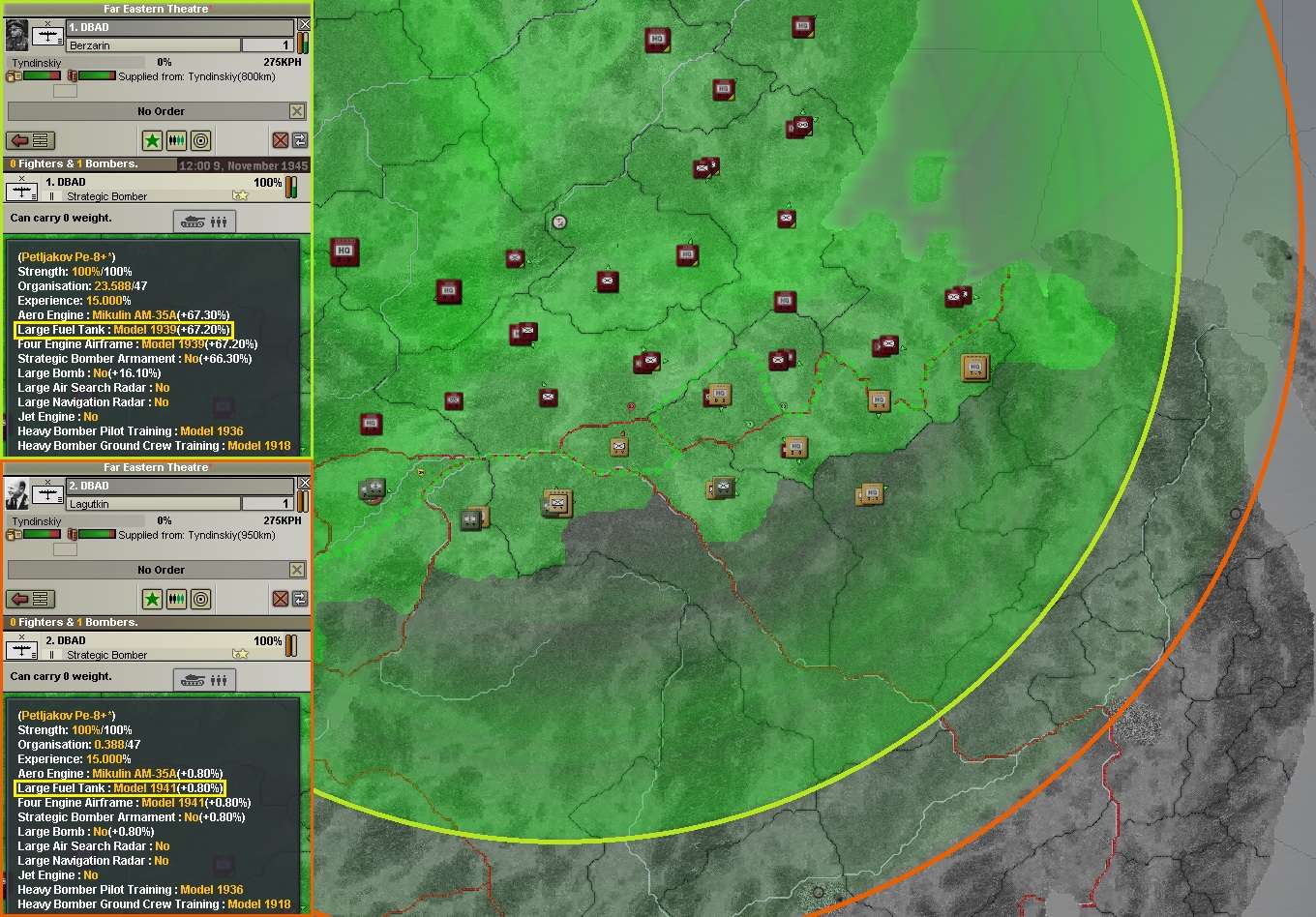
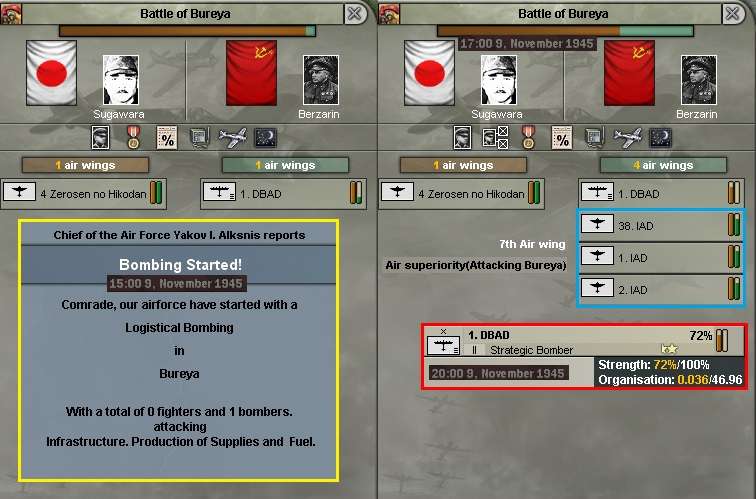
Later that night, the Soviets (left on an air superiority mission in the area) had their revenge, intercepting 4 Zerosen at 2200hr over Bureya, taking a little damage but devastating the Japanese interceptors, with an air victory declared.
As Soviet progress was made towards Nikolayevsk na Amure, a new southern objective of the air base of Tumnin was added to 6th Army’s list.

As the month ended, the sector had seen some heavy fighting, including probably the largest single battle yet in the Far East, a Soviet victory attacking Obluchye, with combined casualties of over 5,000 men in the six-day battle. The next three largest battles were all won by the Japanese, in that part of the line nearer to the Central Sector (and thus with more supply problems).
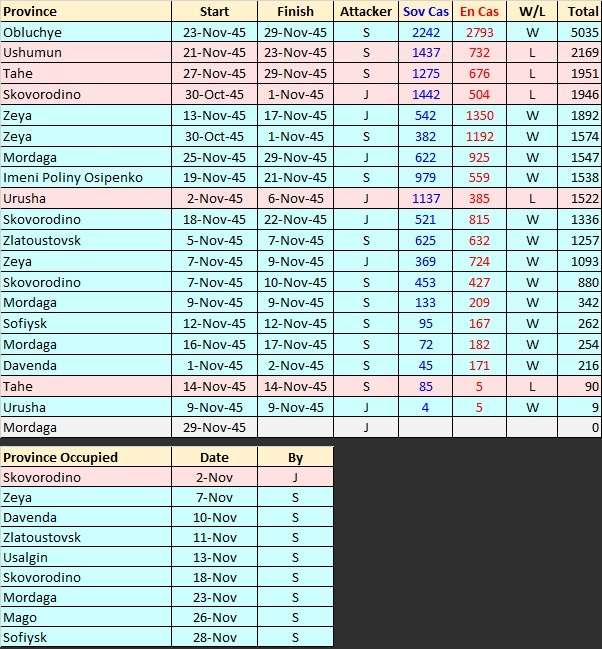
Battles listed in size by total casualties, with unfinished at the bottom, shaded grey.
******
1.2 Central Sector
On 1 November, 52nd Corps was transferred from 7th to 1st Army after the latter’s recent more aggressive spirit and progress in the Central Sector, bring the 1st up to 100,000 men in strength, in three corps.
By 3 November, supply problems were widespread. Virtually no air support was available in the sector and attacks that should have been reasonably viable were often aborted after a short skirmish, while defence often became very difficult.
This persisted during the month: the defence of Shilka (three otherwise strong Soviet divisions defending an attack by one Japanese infantry division) was badly compromised on 17 November by a lack of supplies. That shorter battle was won, but an eight-day battle from 20-28 November was eventually lost, despite a casualty count well in the Soviets’ favour (658 v 1,319), from a lack of organisation following a continuation of poor supply.
The Japanese were firmly on the offensive in this sector throughout the month, winning all the larger battles and gaining some ground in Ust’Karsk early and then Mogocha later in the month. This was offset by a range of smaller Soviet victories and gains further west, especially the objective province of Mildigun, captured on 5 November and held for the rest of the month.
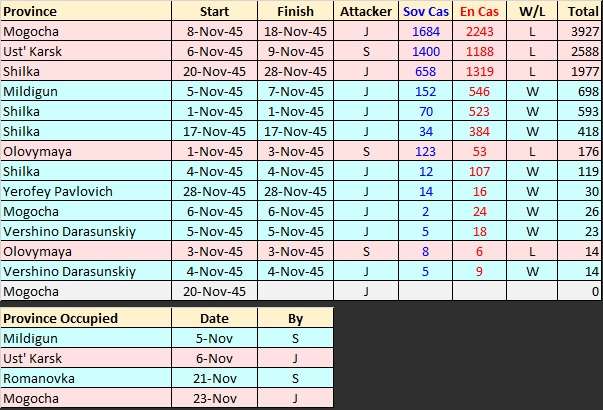
******
1.3 Southern Sector
The Southern Sector only saw limited combat by Soviet forces, though the Mongolians (for whom there are no battle reports) were quite active, advancing in the south (which I think triggered one of those auto occupation of low infra provinces gains) and holding elsewhere. Not a single air mission was flown in the sector during the month, highlighting the supply problems for the VVS in Irkutsk.

******
2. Finland
The suppression of the Finnish revolt was in full swing during November. The Soviet Archangelsk Theatre had mounted its main response from the north and east. A few Finnish units were running around in the less well-guarded margins to the west and south, but there was no doubt they would be rounded up in due course.
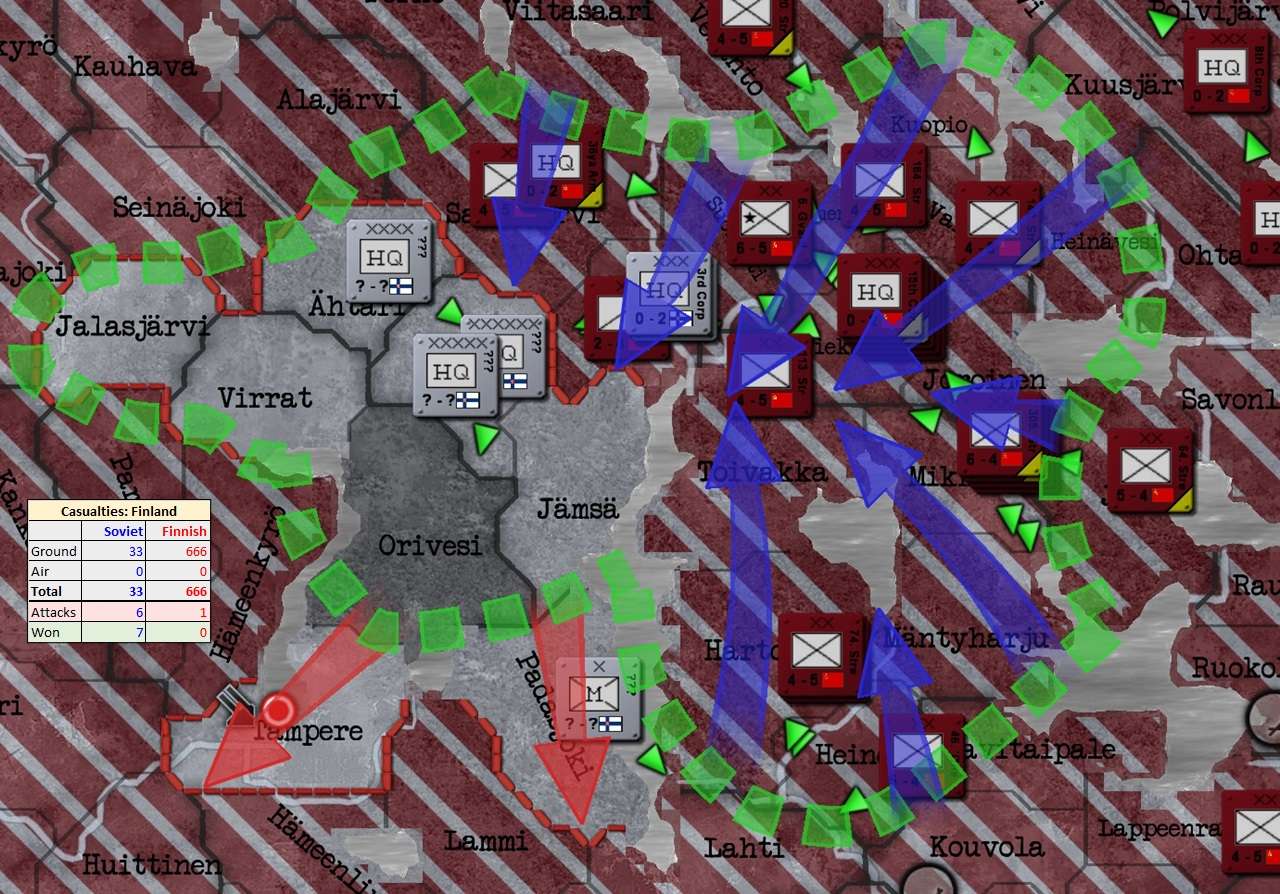

Question: could this theatre be diverting supply effort from the Far East, hence causing some of the problems over there in recent weeks? If so – damn pesky rebels, but well done game.
******
3. Production and Logistics
The new and powerful 11. Tank Division finished basic training and was deployed in the Lwow Theatre on 1 November. Its place in the queue was taken up by a lighter and smaller but faster armoured formation.
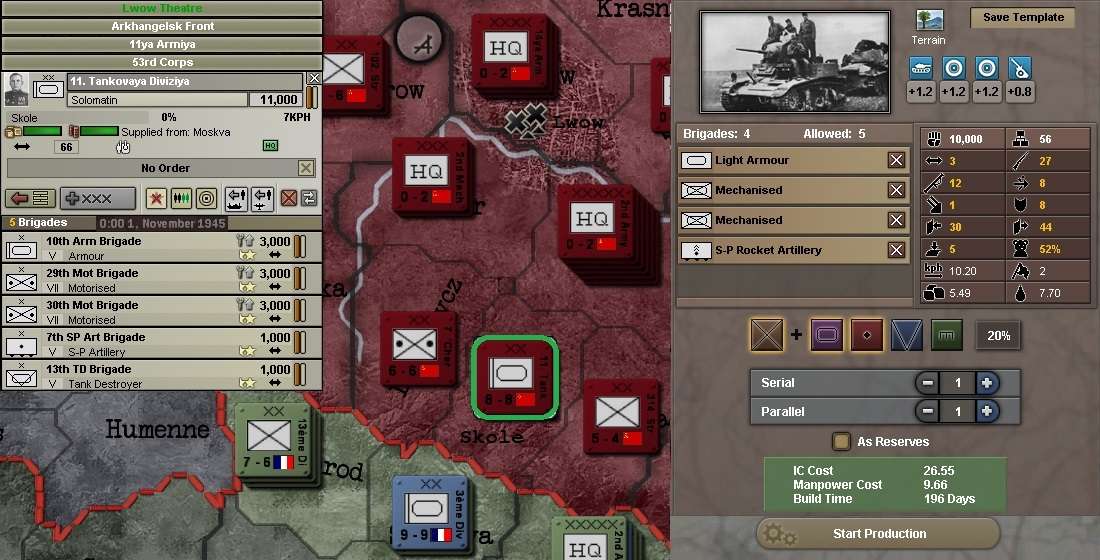
A new nuclear reactor (the third such facility) was completed in Noginsk on 5 November. No new reactors were planned, but the released effort went into expanding the Mytishchi facility to a third level. All were near Moscow, where Stalin could keep a close eye on them.
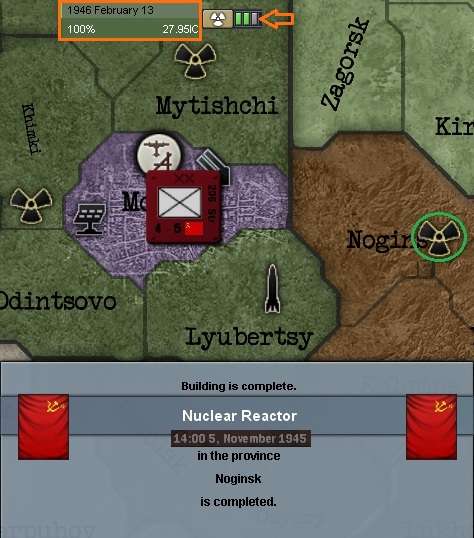
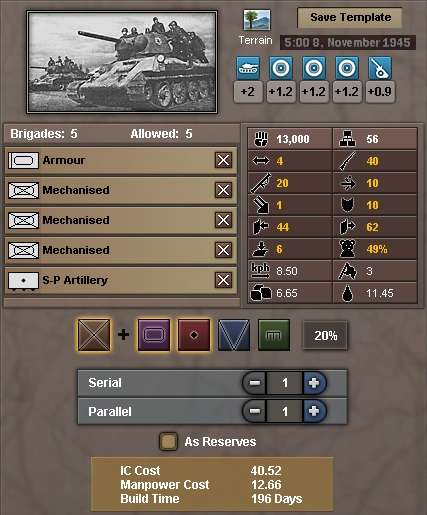
As described in the Far East reports, supply across the front was poor by 12 November, especially around Irkutsk, except in the eastern part of the front, the advance in the middle of the Central Sector and in southern Mongolia. It was probably no coincidence that this was where the Soviets were having the most success on the battlefield.

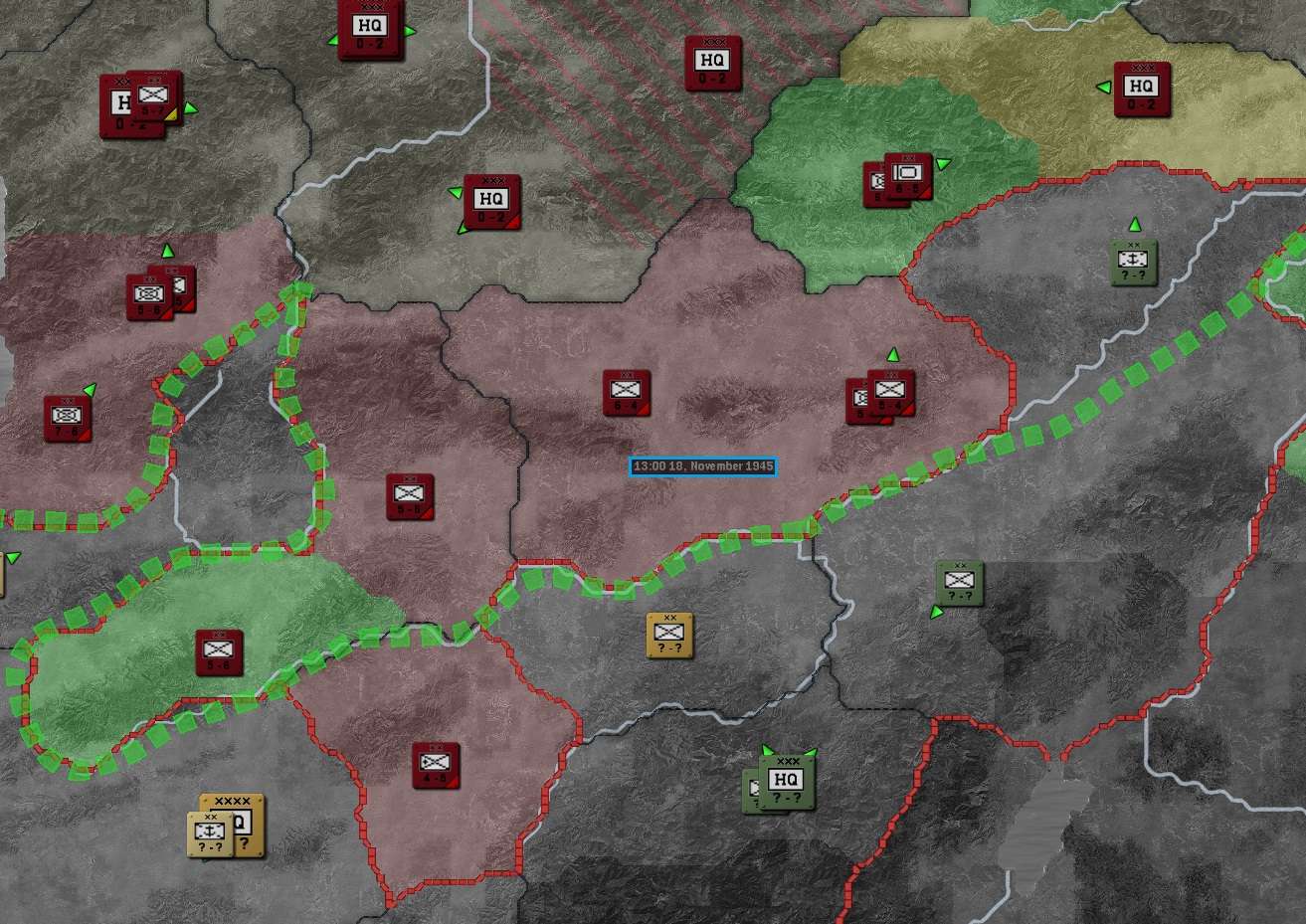
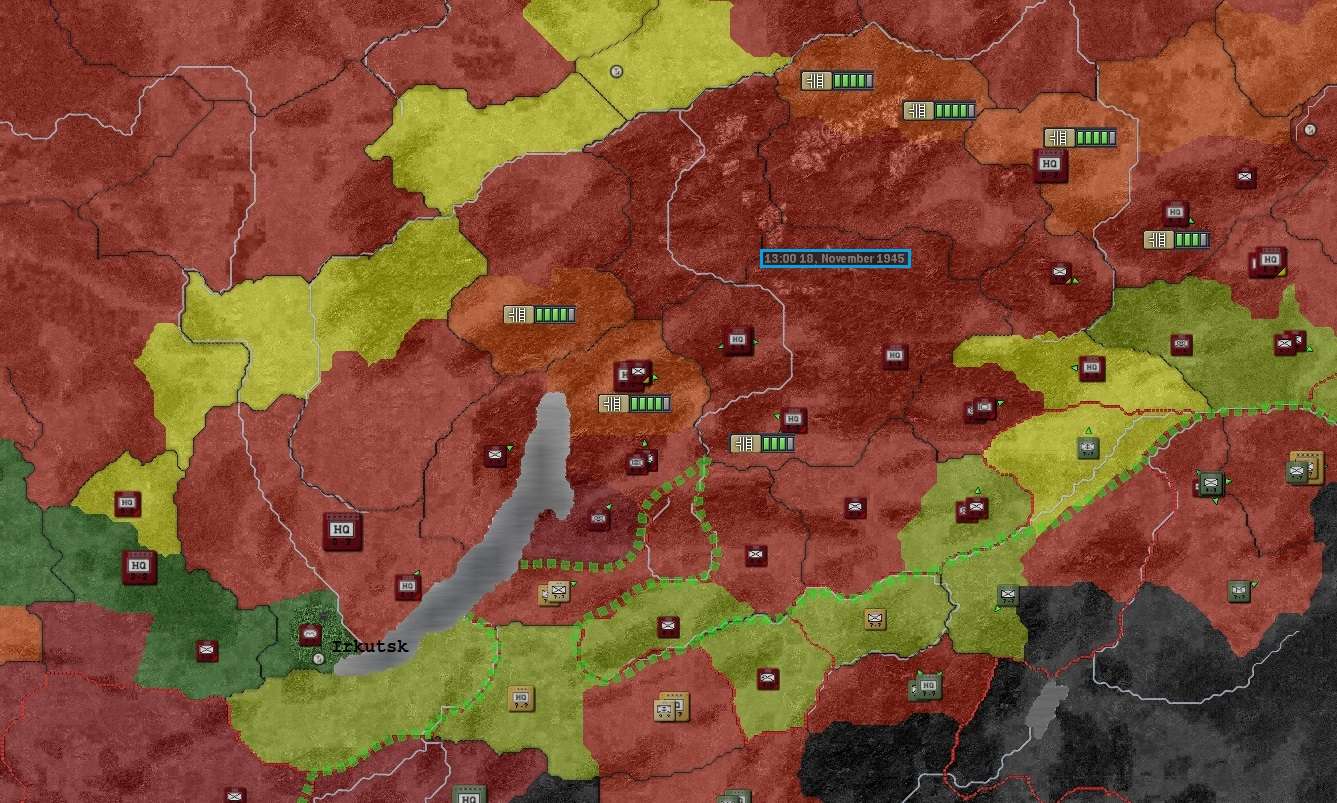
******
4. Technology
With the improving intelligence situation (see more below) with eight spies in reserve and growing, one LS of effort was transferred from spy training (down to 3) to research (up to 21/22) on 5 November, with medium tank reliability (L6) being resumed. This was repeated on 7 November, with special forces (L5) back on the drawing boards and 22/22 projects again under research.
Just the two research projects were completed during the month, with supply organisation given another boost on 30 November due to current logistic problems in the east.

******
5. Espionage
A review of international mission priorities on 1 November saw the following decided:
- Turkey – spy strength 1, 50% c-esp; 50% party support. Changed to 100% party support.
- Spain – spy strength 6, 100% c-esp. No change.
- Manchukuo – spy strength 2; 50% c-esp; 50% disrupt NU. Changed to 66.6% c-esp; 33.3% disrupt NU.
- Japan – spy strength 2; 66.6% c-esp; 33.3% disrupt NU. No change.
The same day, with 11 Soviet spy teams now in reserve, the Manchurian mission was tweaked again to take it back to 50% c-esp; 50% disrupt NU.
The following table details the number and identity of spies caught by the USSR within its borders or on their overseas missions (a total of 29, down four from October) and the progress of the four Soviet foreign missions.
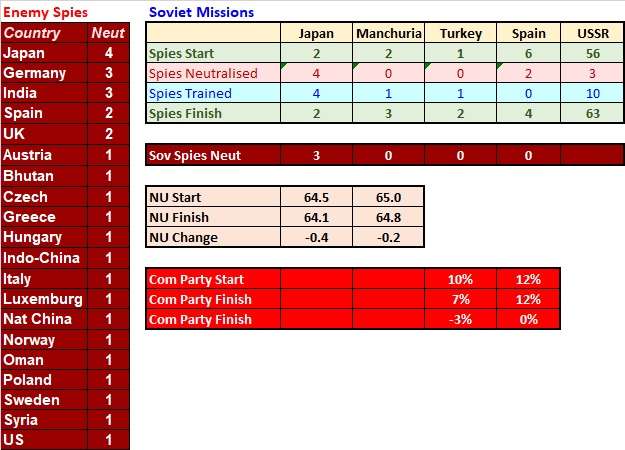
******
6. Theatre Summaries
As seen before, progress in the Far East was slower than had been hoped, principally due to the related factors of supply difficulties, little air support and ground combat. This in turn made the Japanese more aggressive in the Central Sector, where they attacked more often than the Soviets. Total casualty rates, especially from Soviet air attacks, were down significantly from the month before. The continued progress of the 6th Army on the Pacific Coast remained the one really substantial bright spot. for the Soviets.

******
South East Asia had seen only minor changes this month. Malaya continued to be neglected by the Allies, while at first there was some surprise that the Japanese may have re-invaded the Philippines, where the Allied liberation army was still largely in place. There was no additional information available on the apparent Japanese advances in southern Sulawesi.
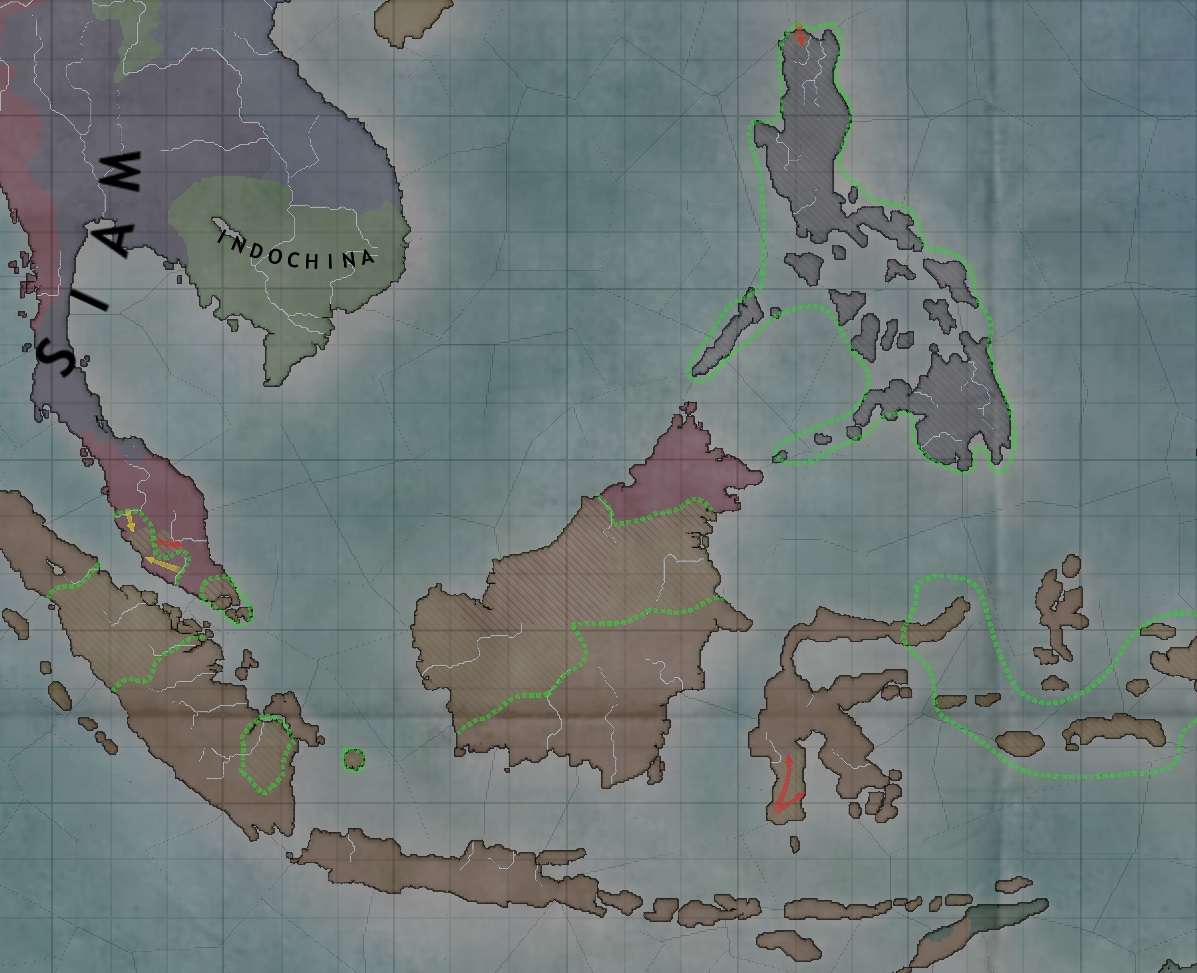
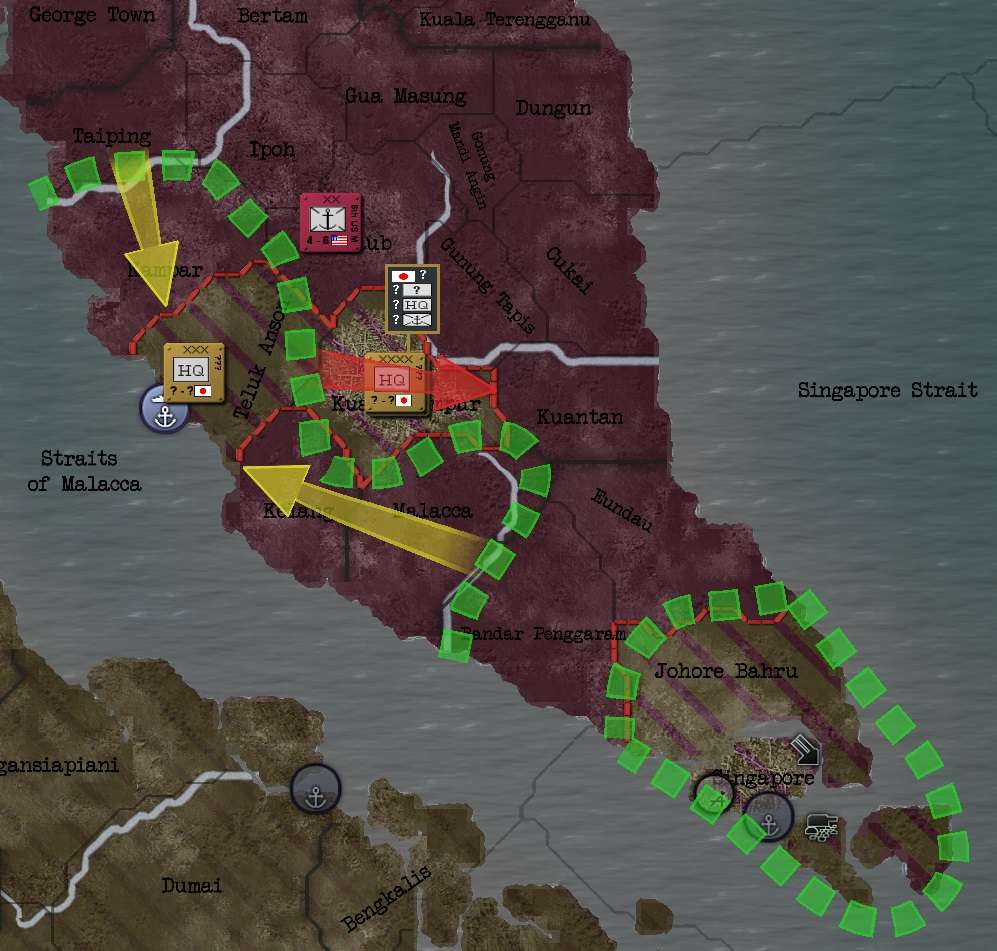

******
In Australia, things had not quite been mopped up yet, with a Japanese mountain division loose in New South Wales and Japanese marines holed up in Adelaide.
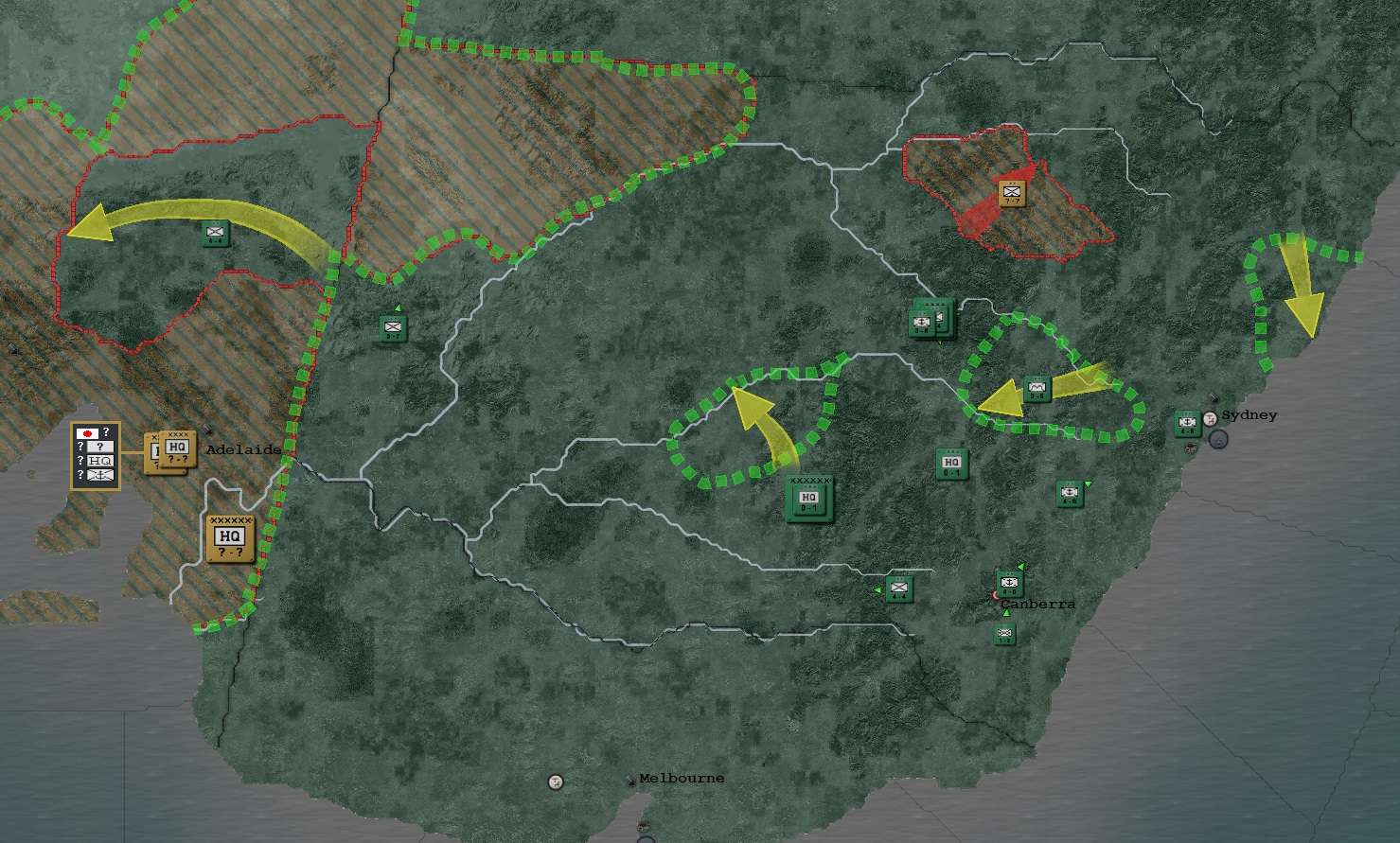
Last edited:
- 2


